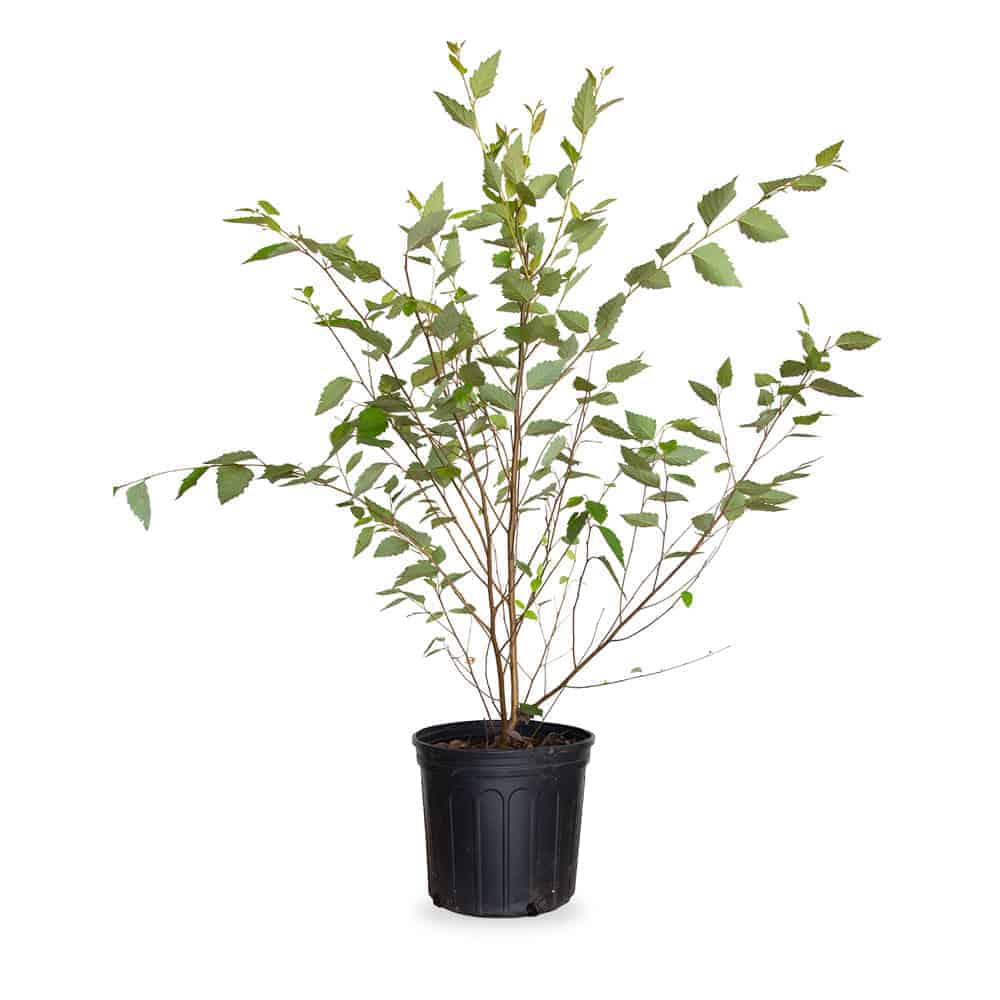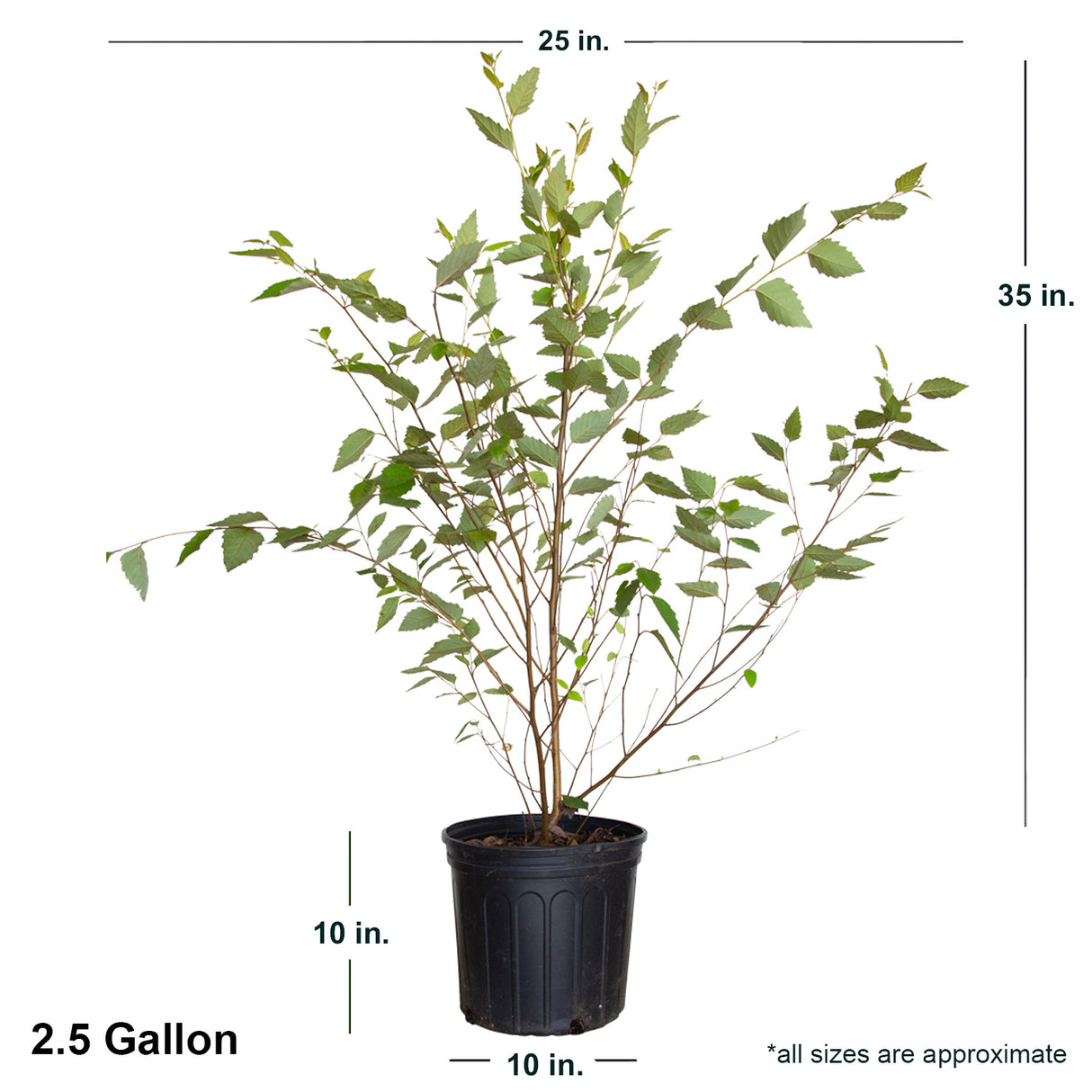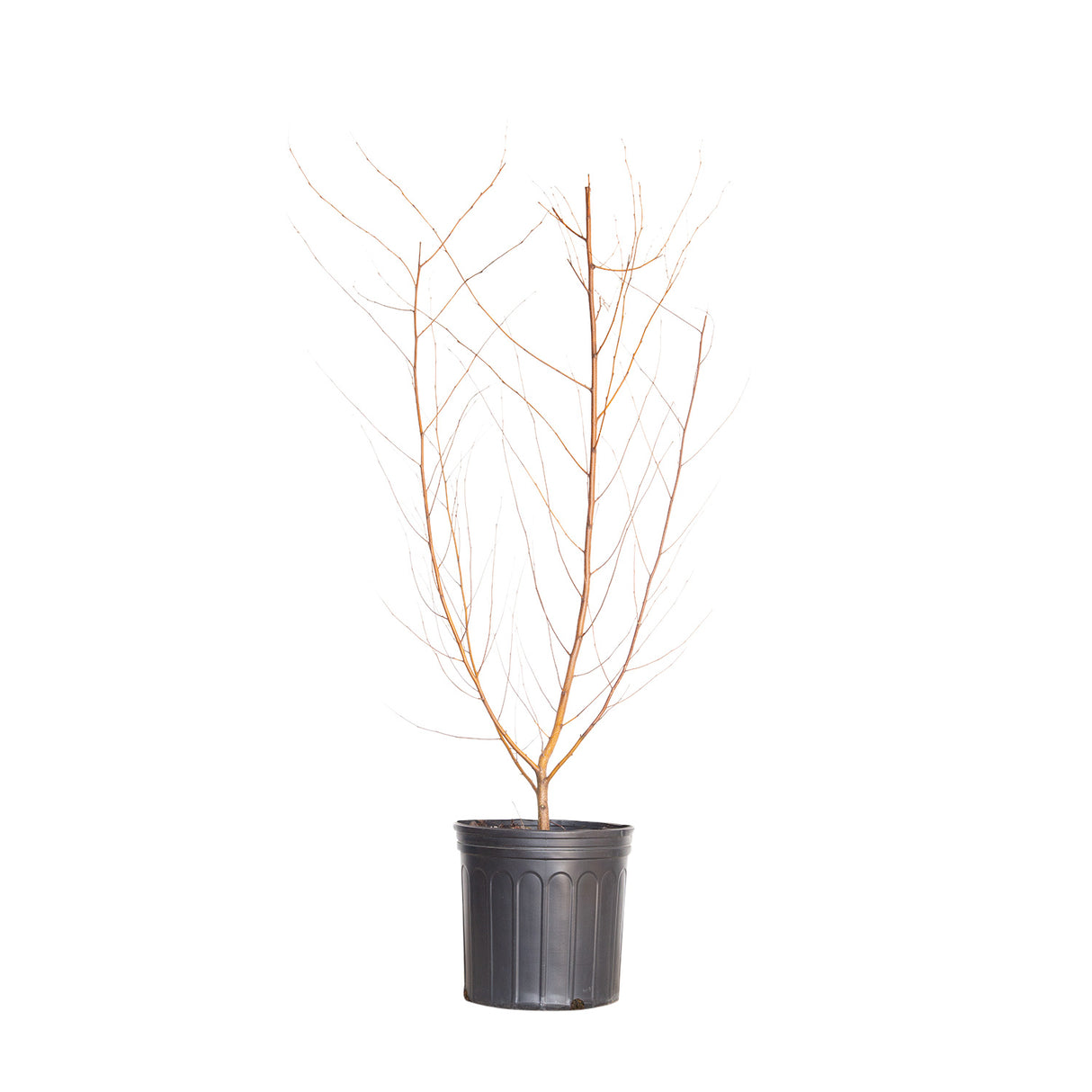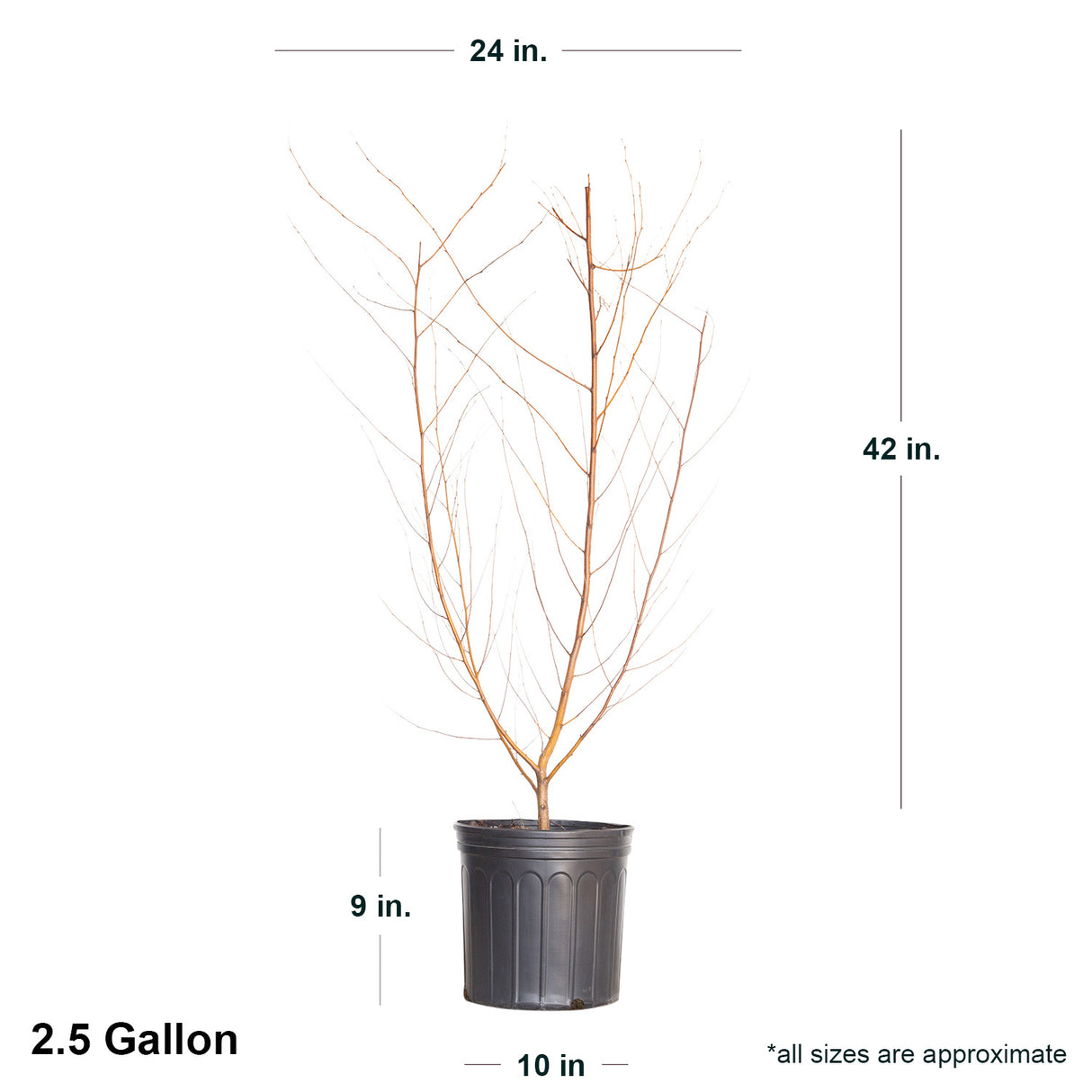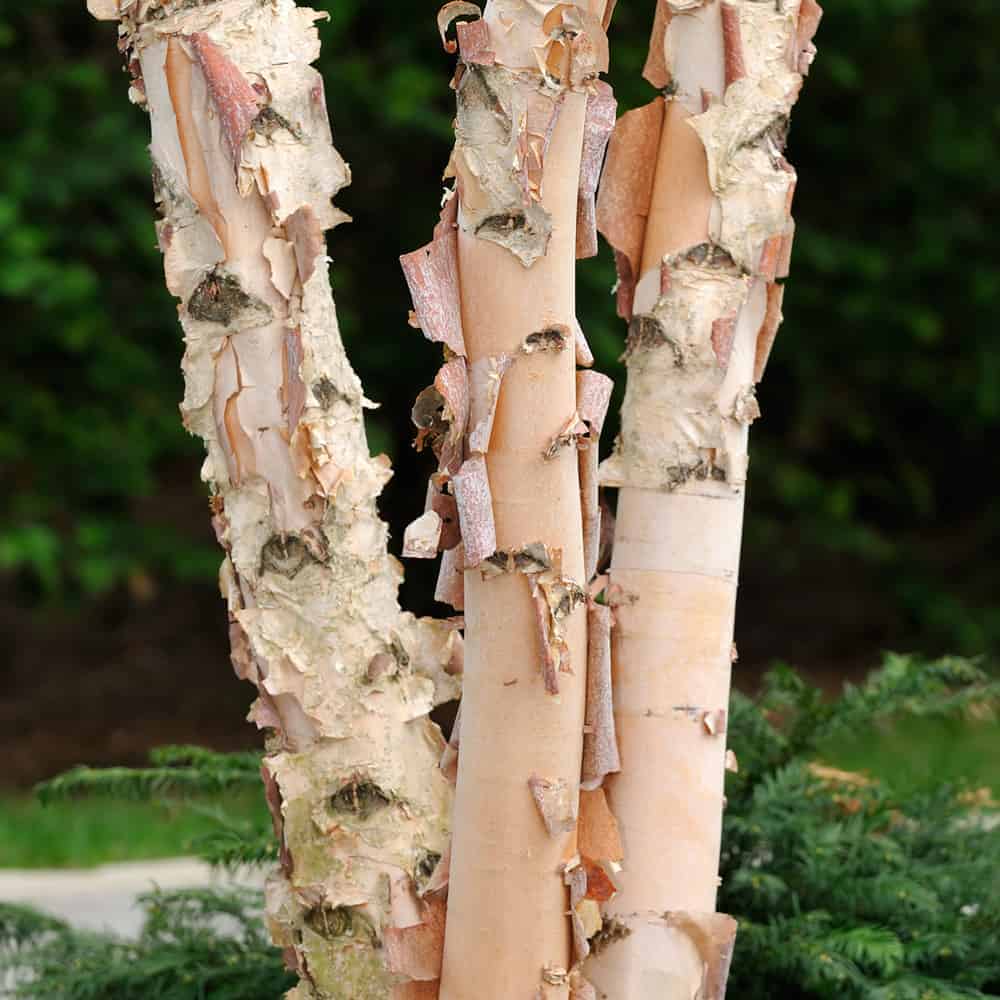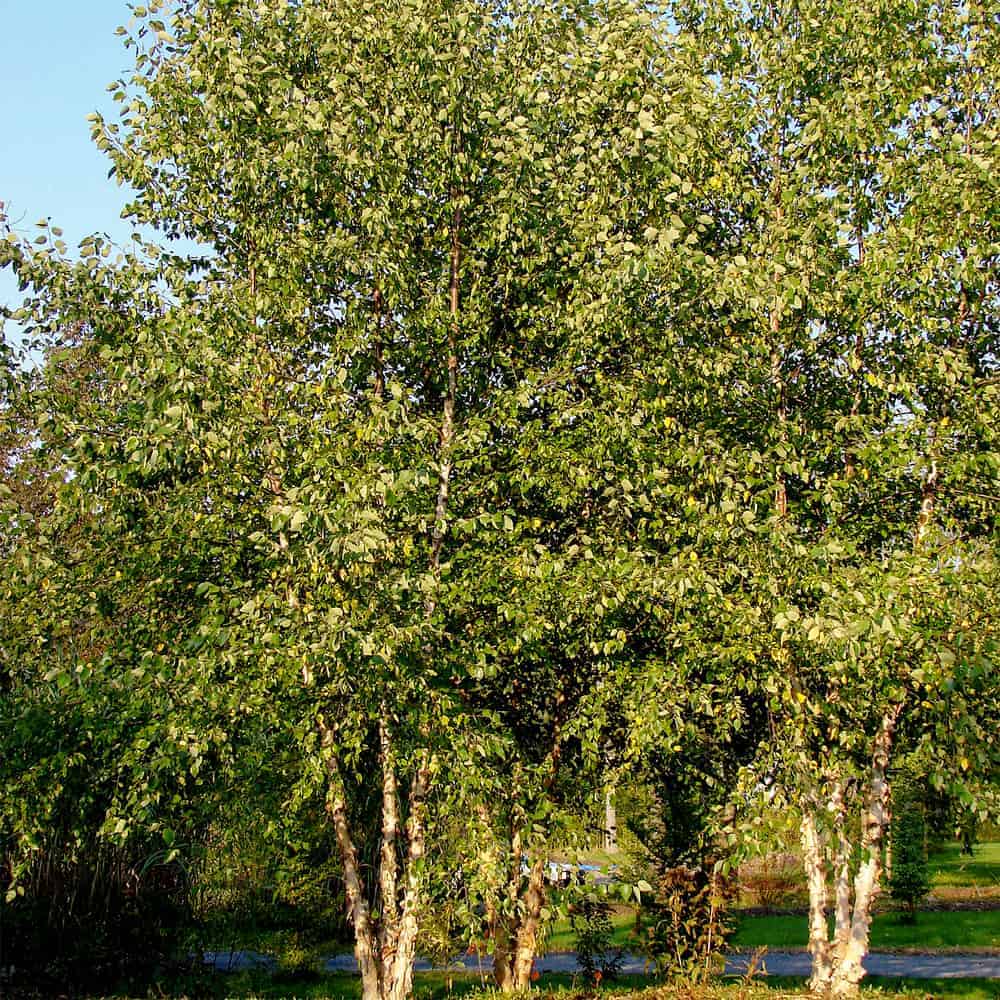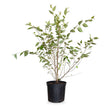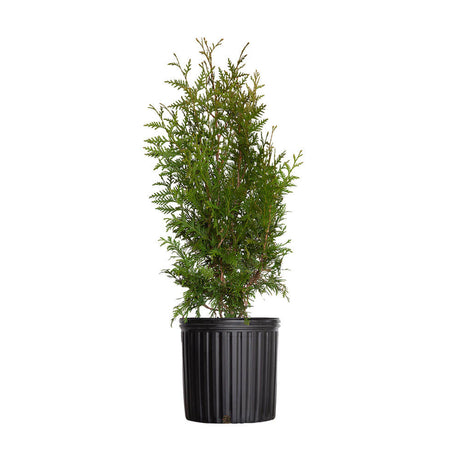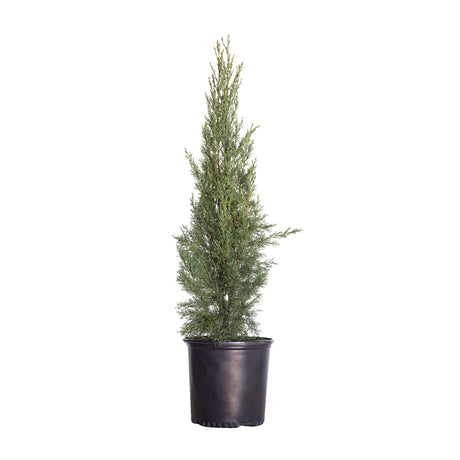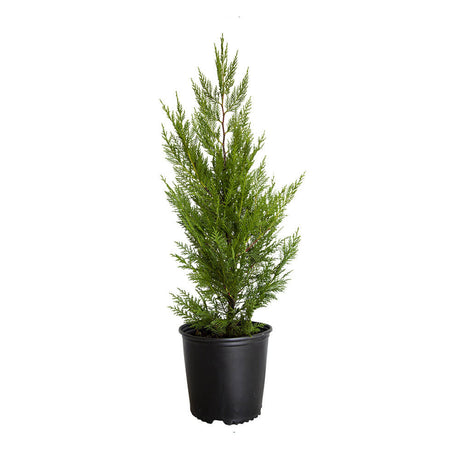River Birch Tree
River Birch Tree - 2.4 Gallon is backordered and will ship as soon as it is back in stock.
Couldn't load pickup availability
Description
Description
The River Birch Tree is a deciduous beauty that captures the hearts of arborists. In fact, it was even crowned the Urban Tree of the Year in 2002 by the Society of Municipal Arborists. This tree may not be as well-known as maples or oaks, but its popularity is on the rise due to its impressive resilience in most USDA Hardiness Zones (3).
At maturity, the River Birch can grow upwards of 50 feet with fertile, slightly acidic soil and at least 4-6 hours of sunlight. On average, the birch tree grows 1 to 2 feet per year. It can take full to part sun, making it viable in a wide variety of locations in your yard that have room to accommodate its 25-35 foot canopy.
The peeling bark of the River Birch is a year-round point of interest. On young trees, the cinnamon-brown bark curls away to reveal a creamy to reddish-brown inner bark. As the tree matures, the bark becomes less showy and develops a thicker bark that appears grayish brown with darker brown spots. It takes a few years for the tree to become old enough to start exfoliating.
The leaves emerge each spring and retreat each fall. They are glossy green with a slight tooth and about 2-3" long. This foliage is eaten by deer and other foliage grazing animals. It produces long tendrils of seeds in the spring, which songbirds love.
River Birch Tree Care
- Hardy from USDA Zones 3-9.
- Plant in Full Sun to Part Shade for best results.
- River Birch is tolerant of most soil types, even clay.
- Water 2-3 times per week after planting. This will help it to develop deep roots and allow it to support rapid growth.
- Fertilize new plantings in early spring with a balanced nitrogen-rich fertilizer to promote new growth.
Disclaimers:
If your tree is over 46" inches tall at the time of shipping, we will have to trim it to fit into our boxes.
Customers Outside of the Southeastern United States: Shipping these trees over long distances during the Summer is not recommended, please wait to order during Fall to Early Spring for best results.
Care & Use
Care & Use
Spacing Recommendations
Spacing Recommendations
-
Scientific Name
-
Hardiness Zone3, 4, 5, 6, 7, 8, 9
-
Sun ExposureFull Sun to Part Shade
-
Evergreen or DeciduousDeciduous
-
FeaturesAttracts Birds / Butterflies, Fast Growth, Sun Loving
-
Feature ColorGreen
-
UsesAccent, Privacy Planting, Specimen, Woodland Garden
-
Water NeedsMedium
-
Bloom SeasonNone
Growing Zones : 3, 4, 5, 6, 7, 8, and 9

